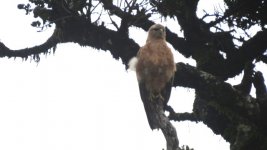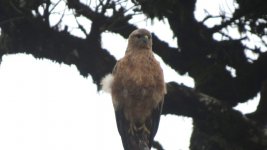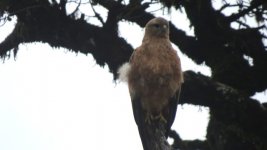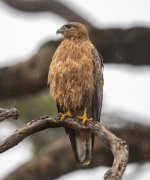Several trip reports of Sri Lanka list ‘Himalayan Buzzard’ - there’s an image of what was ID’d as ‘
burmanicus showing a pale head in one of them which is a dead ringer for your bird but its a pdf and I can’t get it to link
Edit; this might work
https://wingspan-bird-tours.s3.amaz...RT__SRI_LANKA_2019_-2.original.pdf?1550594150
CeylonBirdClub lists Himalayan ( ‘
burmanicus’) and also LLB
rufinus as migrants/vagrants. Steppe (
vulpinus ) isn't on the list ( I assume its not up to date as it doesnt seem to recognise the latest species revisions re Himalayan buteos)
http://www.ceylonbirdclub.org/sri-lanka-bird-list.php
just a few random trip reports pulled off the web - there’s no doubt Himalayan Buzzard is a regular winter visitor to S.L backed up by this tour which lists Himalayan Buzzard as one of the target species on Horton Plains
https://www.experiencethewild.com.au/?p=Tours-16-Day-Sri-Lanka
Himalayan Buzzard seen 3rd January
http://srilankabirdingtripreports.com/André-Weiss-Pryde-Trip-Report
seen February
https://www.surfbirds.com/trip_report.php?id=1346
seen 26th November
https://www.limosaholidays.co.uk/reportpdfs/Sri Lanka Bird Report November 2015.pdf
Many thanks for your efforts, Deb.
I had noticed that Ceylon Bird Club only lists Himalayan. My copy of A Photographic Field Guide to the Birds of Sri Lanka (Wijeyeratne), published 2017, includes a checklist and only lists Himalayan and Long-legged. Doing a search on Macaulay, I was able to find 2 images of putative Himalayan photographed in Sri Lanka, but no images of Steppe or Long-legged taken there.
https://ebird.org/media/catalog?tax... Lanka (LK)®ionCode=LK&q=Himalayan Buzzard
Yes, the bird in the trip report you linked does look a bit like mine. The guy on the far right in the group photo is my driver, btw.
I also found 2 images on OBI. This one, taken by the aforementioned Wijeyeratne, is labelled
burmanicus:
http://orientalbirdimages.org/birdi...rd_ID=913&Bird_Image_ID=21301&Bird_Family_ID=
This one was taken in Mannur (north-west), and is only labelled as Common Buzzard. It looks rather different to other birds:
http://www.orientalbirdimages.org/s...=132172&Bird_ID=913&Bird_Family_ID=&Location=
I found one more image from Sri Lanka, this one labelled Steppe Buzzard, although it looks pretty similar to the examples of Himalayan I've seen:
https://www.classicsrilanka.com/blo...journey-into-a-hidden-world/steppe-buzzard-1/
It seems to me Himalayan is pretty variable but one feature I'm noticing is a small but prominent bright yellow cere.
My guide called Long-legged at the time, and a forum member said in a personal communication that it looked a bit like LLB because of its long-necked and long-winged appearance, but I have not been able to find any evidence that LLB occurs in Sri Lanka or anywhere near it. Our bird was quite pale-headed but I think on LLB this should extend to the breast, which should contrast with a darker belly.
So overall I'm leaning towards Himalayan but with no certainty. I wish now I'd taken some more shots.












